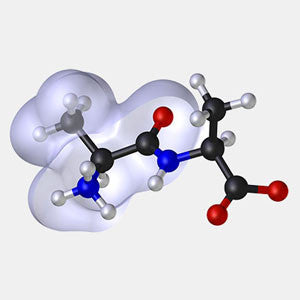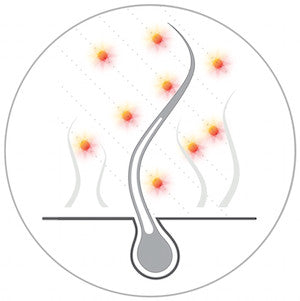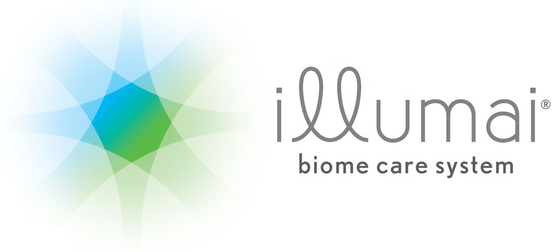What are Sulfates? And Why Should You Care if a Shampoo is Sulfate-Free?

Look down any health and beauty aisle, and you’ll see ”sulfate-free” highlighted on a bevy of new products. But what exactly are sulfates? More importantly, what’s wrong with them?
Well, sulfates are aggressive detergents made of sulfur-containing mineral salts. The most common are Sodium Lauryl Sulfate (SLS) and Sodium Laureth Sulfate (SLES). First introduced into modern hair care in the 1930’s, sulfates revolutionized the health and beauty industry. Prior to their introduction, people relied on simple (but not always effective) soaps and other methods to clean their skin and hair. In comparison, sulfates were powerful, inexpensive and easy to acquire. Best of all, they were responsible for the foaming lather we’ve come to associate with being clean. But now that it’s one of the most common chemicals used in our households, we are beginning to understand that sulfates have an impact on both our health and beauty.
How Sulfates Work
Sulfates are surfactants – molecules that can attract both oil and water: One end of the molecule clings to the oily dirt, while the other clings to water. Translation? They can lift the grease and grime off of our skin and hair, dissolve (emulsify) it into solution and then rinse everything down the drain.
Surfactants also make water “wetter.” That sounds strange, but consider this: When rain falls on a freshly waxed car, the water beads up. But if you were to spray the car with water mixed with a surfactant, it would then spread all over the car. Water molecules attract one another – part of the phenomena known as surface tension. Surfactants reduce the surface tension of water, allowing it to spread more easily, even permeating into the cortex of the hair shaft (where it causes frizz and other damage).
A Matter Of Degree
Sulfates are powerful, cheap and everywhere – not just in lathering shampoos, body washes, face cleansers and toothpastes, but also in household cleaners, laundry detergents and dish soaps. In fact, because they are so effective, sulfates are also used in the manufacturing and construction industries to clean and degrease heavy machinery. The problem? By stripping all the the protective oils from your scalp and hair, sulfates overshoot the mark. They are too aggressive.
Sulfates and Your Hair and Scalp
Our skin and hair are part of our natural living ecosystem known as the biome – and sulfates disrupt its delicate balance. Here’s how:
- Sulfates wash away the natural anti-microbial peptides, proteins, and water-proofing oils our biomes create. Without these health-preserving substances, our hair and scalp are stripped of vital moisture, exposed to harmful microbes, allergens and environmental pollution and vulnerable to damage, infection and illness.
- Sulfates lift the cuticle of the hair. The outermost layer of the hair shaft is a series of hard-shelled, overlapping hair cells called the cuticle. They lay flat, like shingles on a roof. Owing to the reduced surface tension, sulfates work their way under the cuticle, making it lift and buckle. This exposes the cortex of the hair to moisture, which causes frizz, or to arid air that can cause dryness. The compromised cuticle and cortex weakens the entire hair strand, making it dull and prone to damage, breakage and split ends.
- Sulfates make your hair take longer to dry. When the cuticle is lifted, more moisture is absorbed into the cortex, which then takes up to twice as long to dry. If you are using a hair dryer, that’s twice as much heat exposure on an already-compromised hair strand.
- Sulfates leave an anionic charge. Sulfates have a negative electric charge – and that charge remains on your hair and scalp when you rinse the shampoo away. This leaves a dulling residue and can cause static and flyaways. To neutralize this film, the hair must then be coated with a synthetic, silicone-based conditioner (more chemicals), which masks the damage with an artificial shine.
- Sulfates cause scalp irritation. Since sulfates strip the natural lipids off the scalp, its natural water barrier is broken. Chemicals from products can then permeate the top layers of skin, causing irritation and inflammation. Meanwhile, the underlying layers of skin are exposed to pathogens (disease-causing bacteria) that otherwise wouldn’t be able to get there.
- Sulfates cause follicle stress. Each hair follicle is covered by something called a “lipid cap.” Sulfates remove this protective cap, exposing the good microbiota that live within to the atmosphere. Since they are anaerobic, these good bacteria die, and bad bacteria have direct access to a now undefended follicle.
Sulfate-free? Look again.
Although many consumer products are now labeled “sulfate-free,” many of them rely on chemical compounds that are only an atom or two away from a true sulfate. This allows them to wear the badge “non-sulfate” even though they are as destructive as sulfates are. Check your labels for these most common forms of sulfates and their close chemical cousins "sul-fakes":
- Sodium Lauryl Sulfate (SLS)
- Sodium Laureth Sulfate (SLES)
- Sodium Lauryl Sulfoacetate
- Sodium Lauroyl Isoethionate
- Sodium Lauroyl Taurate
- Sodium Cocoyl Isoethionate
- Sodium Lauroyl Methyl Isoethionate
- Sodium Lauroyl Sarcosinate
- Disodium Laureth Sulfosuccinate
Sulfate Alternatives
So, you’ve decided to avoid sulfates. But you still have to get clean. Our hair and scalp needs to be washed to stay healthy: When we cleanse, we remove dead skin, sweat, dirt and the excess oil and bacteria we don’t need. Surfactants make this process much more efficient. The good news? There are gentler surfactants available that don’t disrupt your biome. Science has progressed past the harsher chemicals of the 1900s. Now that you know, it’s that simple! Read your labels, and look for truly sulfate-free cleansers that can remove excess dirt and oil, and leave you clean, protected and healthy.
If you are ready to rid your haircare regimen of harmful sulfates, parabens and silicones, try illumai! Discover how products designed to support your body's natural ecosystem can transform the way your hair looks and feels without damaging its natural function.
Learn More . . .

Biome Care - Healthy Hair Starts Here

Detox Your Locks!


